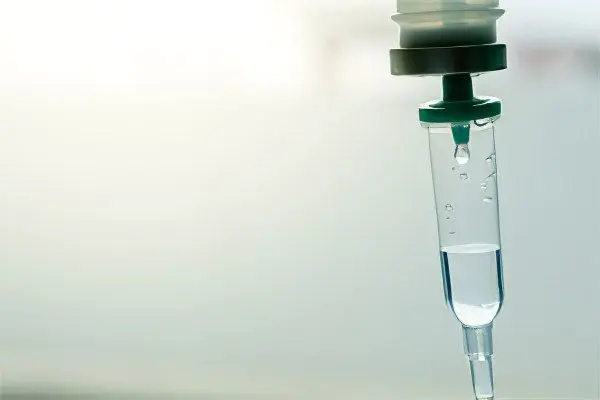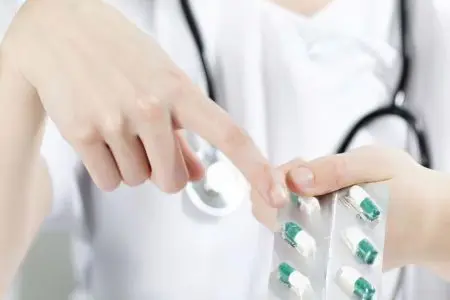Contents
Dissolution and splitting of the thrombus is carried out using a process such as thrombolysis. It is carried out naturally or artificially (medication). In the first case, blood enzymes break down small clots. Large blood clots can dissolve only under the influence of thrombolytics. Medications for thrombolysis are prescribed by the attending physician when relieving the effects of myocardial infarction, ischemic stroke, and in the treatment of cardiovascular diseases.
Thrombolytics – what is it?

Thrombolytic drugs are drugs that dissolve blood clots. They consist of fibrin strands, which are coagulated proteins. The formation of a blood clot is part of the natural defense of the human body, designed to clog mechanical damage to blood vessels during injuries. In a patient with a predisposition to thrombosis, or with a combination of negative factors, blood clots form in intact vessels. Constantly increasing, the thrombus partially blocks the lumen of the vessel, disrupts blood circulation in it.
If a blood clot completely blocks the main artery, doctors have only a few hours to perform the operation and thereby save the patient’s life.
Thrombolytics should be distinguished from drugs with a similar effect aimed at preventing the progression of cardiovascular diseases. These drugs are intended for emergency dissolution of a blood clot, they are injected directly into the vascular system.
Fibrinolytic drugs are used for thrombolysis of large clots, as well as for the dissolution of blood clots in debilitated patients or in the elderly, when the body cannot break down a clot on its own. Due to thrombosis, ischemia occurs – a condition of circulatory disorders of various organs and oxygen starvation of tissues. When a blood clot separates, it breaks off and clogs the vessels leading to vital organs. As a result, an embolism or thromboembolism occurs.
Indications and contraindications

The appointment of thrombolytics is the prerogative of the attending physician, who will definitely take into account the indications and contraindications for their use. Most often, drugs with thrombolytic action are used in the treatment of thrombosis and thromboembolism.
Indications for thrombolytic therapy:
Stroke of cerebral vessels;
Myocardial infarction;
Thrombophlebitis;
Thromboembolism of the pulmonary artery (body);
Thrombosis of the main vessels in pathologies of the cardiovascular system.
A blood clot can form even after a successful surgical intervention, or after a severe injury. With complications of varicose veins, thrombophlebitis develops – an inflammatory process of the vessel wall with the subsequent formation of a blood clot. The insidiousness of a blood clot is that for a long time they do not show noticeable symptoms. The patient discovers that he is seriously ill, only with a complete blockage of the vessel and a sharp deterioration in his condition.
Absolute contraindications to the use of thrombolytics:
Severe nasal, gastrointestinal, urogenital bleeding that occurred at the time of treatment, as well as during the previous 2 weeks before it.
Injuries, injuries, surgeries that occurred within the previous 10 days, if these cases concern the spinal cord or brain – the period increases to 2 months.
Hemorrhagic stroke within the last six months.
Pathologies of the circulatory system related to blood clotting.
Elevated blood pressure, not stopped by drugs.
Low level of blood platelets.
Allergy, individual intolerance to thrombolytics and their components.
High risk of developing aortic aneurysm, its dissection, pericarditis.
Suspicion of pancreatitis.
Thrombolytics are prescribed with caution in the following diseases and conditions:
Age over 75 years;
Pregnancy;
History of diabetes mellitus;
Chronic pathologies of the heart, liver, kidneys;
Burns covering a large area;
recent bone fractures;
less than nine months have passed since the last thrombolysis.
If you have allergies and somatic diseases, you should definitely tell your doctor about it.
Classification of thrombolytics

There are currently 4 generations of fibrinolytic drugs. Despite the fact that a lot of time has passed since the invention of first-generation drugs in the middle of the last century, these drugs are still used with considerable efficiency.
Systemic preparations of the first generation (Streptodecase, Fibrinolysin, Streptokinase, Urokanase) are natural enzymes that activate the natural processes of response to the formation of blood clots. The risk of their use is that the foreign proteins in them can cause anaphylactic shock. In addition, these drugs can cause bleeding due to the activation of a quantitative blood enzyme.
Second-generation drugs (Alteplase, Actilyse, Remombinant Prourokinase) were created using biotechnology by introducing the necessary genes to E. coli bacteria. The drug is devoid of side effects of first-generation drugs, since its enzymes act locally, directly in the focus of thrombosis.
Third-generation drugs (Tenecteplase, Reteplase, Lanoteplase) – selectively and for a long time act on a blood clot with the help of active components.
Combined preparations of the fourth generation (Urokinase-Plasminogen) – have an even faster, more accurate and longer-lasting effect.
Thrombolysis for heart attacks, strokes is performed systemically or locally. In the first case, the drug is injected into a vein, and its enzymes take too long to reach the thrombus. With local administration, the drug is delivered to the thrombus using a catheter, thrombolysis occurs quickly.
Assessment of effectiveness and complications

Evaluation of the effectiveness of the use of thrombolytics is carried out using instrumental methods of examination:
CT scan;
Magnetic resonance imaging;
Coronary angiography.
The study of the coronary arteries is carried out 1-2 hours after the start of thrombolysis using x-rays with the introduction of a contrast agent.
Efficiency criteria:
0 – the contrast agent does not move through the vessel;
1 – a small part of the contrast has passed through the thrombus;
2 – half of the contrast has passed through the area thrombosed with a blood clot;
3 – the patency of the site is restored.
As a result of thrombolysis, complications may occur – hyperthermia, lowering blood pressure, allergy to the drug, bleeding. In case of complications, you should immediately consult a doctor, do not self-medicate.
List of thrombolytic drugs

There are two methods of thrombolysis – delivery of activated plasmin to the thrombus, and activation of plasminogen, which enhances the formation of plasmin.
Classification of drugs according to the mechanism of action:
Direct drugs of plasma origin, directly acting on fibrin;
Indirect drugs-agents that activate the formation of plasmin from plasminogen;
Combined drugs that combine the qualities of the first two groups.
Thrombolytics:
Fibrinolysin (Plasmin). The main active ingredient is profibrinolysin isolated from human plasma. Slowly dissolves arterial clots, therefore it is considered insufficiently effective. Used in the absence of other effective drugs.
Streptokinase. Analogues: Kabikinase, Celiaza, Avelizin. The complex effect of the drug with plasminogen stimulates the formation of plasmin. The drug is produced from a culture of streptococcus, so the patient’s body can develop antibodies to it within 1-6 months. This property of Streptokinase is stopped by the use of vitamins or corticosteroids before its use.
Urokinase. Analogues: Urokidan, Abbokinase. The drug activates plasminogen, turning it into plasmin, produced from kidney cells. Does not cause allergies, does not provoke the formation of antibodies.
Prokinase. Produced from the DNA of human embryonic kidney cells in glycosylated and non-glycosylated form, it activates plasminogen.
APSAK. The combination of Streptokinase with plasminogen is supplemented in this case with acetyl components for an accelerated effect on the thrombus. Analogues: Eminase, Anistreplaza.
Tissue plasminogen activator. Produced from recombinant DNA materials. The protease of the drug dissolves the thrombus when interacting with fibrin, without causing an allergic reaction, the formation of antibodies, or hemodynamic disturbances. The drug is more effective than Urokanase and Streptokinase.
Staphylokinase. An exceptionally effective drug, synthesized from strains of Staphylococcus aureus, does not have allergenicity. In patients using the drug, there are no lethal outcomes.
Thrombolytics are advisable to use for the treatment of thrombosis in any pathologies of the heart and blood vessels. They are able to save the life of the patient, restore his ability to work. To prevent recurrence of thrombosis, the patient is prescribed anticoagulants and antiplatelet agents.









